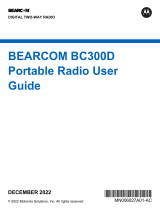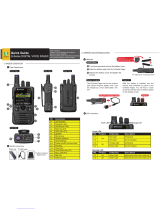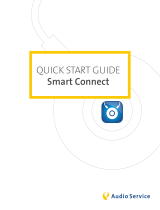
Contents
English
v
Restoring a Nuisance Channel . . . . . . . . . . . . . . . .32
Call Alert Paging . . . . . . . . . . . . . . . . . . . . . . . . . . . 33
Receiving a Call Alert Page . . . . . . . . . . . . . . . . . .33
Emergency Operation . . . . . . . . . . . . . . . . . . . . . . . 33
Sending an Emergency Alarm . . . . . . . . . . . . . . . .34
Sending an Emergency Call (Trunking Only) . . . . .34
Sending an Emergency Alarm with
Emergency Call . . . . . . . . . . . . . . . . . . . . . . . . . . . .35
Sending a Silent Emergency Alarm . . . . . . . . . . . .36
Using the Emergency Keep-Alive Feature . . . . . . .36
Fireground (Conventional Only) . . . . . . . . . . . . . . . 37
Entering Fireground Zone Channel . . . . . . . . . . . . .37
Responding to Evacuation Indicator . . . . . . . . . . . .38
Tactical Public Safety(TPS) (Conventional Only) . . 39
Using TPS Normal Transmission . . . . . . . . . . . . . .39
Man Down . . . . . . . . . . . . . . . . . . . . . . . . . . . . . . . . 40
Pre-Alert Timer . . . . . . . . . . . . . . . . . . . . . . . . . . . .41
Post-Alert Timer . . . . . . . . . . . . . . . . . . . . . . . . . . .41
Alerting User When Man Down Feature is
Triggered . . . . . . . . . . . . . . . . . . . . . . . . . . . . . . . . .41
Triggering Emergency . . . . . . . . . . . . . . . . . . . . . . .42
Exiting Man Down Feature . . . . . . . . . . . . . . . . . . .42
Re-Initiating Man Down . . . . . . . . . . . . . . . . . . . . . .42
Testing the Man Down Feature . . . . . . . . . . . . . . . .43
Secure Operations . . . . . . . . . . . . . . . . . . . . . . . . . 44
Selecting Secure Transmissions . . . . . . . . . . . . . . 44
Selecting Clear Transmissions . . . . . . . . . . . . . . . 44
Managing Encryption . . . . . . . . . . . . . . . . . . . . . . . 45
Loading an Encryption Key . . . . . . . . . . . . . . . . . . 45
Using the Multikey Feature . . . . . . . . . . . . . . . . . . 45
Erasing the Selected Encryption Keys . . . . . . . . . 46
Requesting an Over-the-Air Rekey
(ASTRO Only) . . . . . . . . . . . . . . . . . . . . . . . . . . . . 46
MDC Over-the-Air Rekeying (OTAR) Page . . . . . 47
Infinite UKEK Retention . . . . . . . . . . . . . . . . . . . . 47
Hear Clear . . . . . . . . . . . . . . . . . . . . . . . . . . . . . . 47
Trunking System Controls . . . . . . . . . . . . . . . . . . . . 48
Using the Failsoft System . . . . . . . . . . . . . . . . . . . 48
Going Out of Range . . . . . . . . . . . . . . . . . . . . . . . . 48
Using the Site Trunking Feature . . . . . . . . . . . . . . 49
Locking and Unlocking a Site . . . . . . . . . . . . . . . . 49
Viewing and Changing a Site . . . . . . . . . . . . . . . . . 49
Viewing the Current Site . . . . . . . . . . . . . . . . . . . . 49
Changing the Current Site . . . . . . . . . . . . . . . . . . 49
Mission Critical Wireless
- Bluetooth® - . . . . . . . . . . . . . . . . . . . . . . . . . . . . 50
Turning the Bluetooth On . . . . . . . . . . . . . . . . . . . . 50
Turning the Bluetooth Off . . . . . . . . . . . . . . . . . . . . 50
Re-Pair Timer . . . . . . . . . . . . . . . . . . . . . . . . . . . . 50
Bluetooth Drop Timer . . . . . . . . . . . . . . . . . . . . . . . 51
Pairing the Bluetooth Device with the Radio . . . . . 52
























